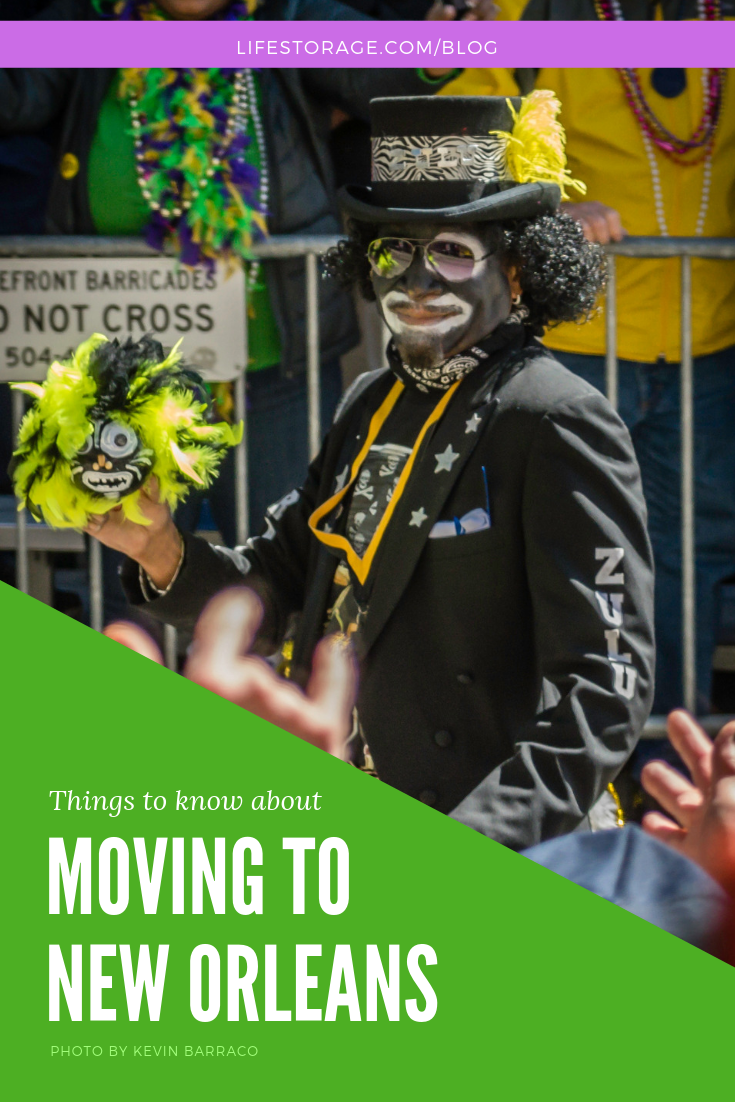
Tell somebody you’re moving to New Orleans (or even just visiting), and without fail, they get jealous.
New Orleans is a party town. It’s a feel-good destination that conjures visions of parades and beads, jazz and Creole cuisine. These are just a few of the reasons why more than 17.47 million visitors came to New Orleans in 2017. Corporate thought leaders and professional associations come for conventions by the thousands. There is a concentration of biotech and medical districts in New Orleans, along with a range of universities. And the city’s passion for pro and college football might just rival any city in America.
But there’s nothing typical about New Orleans, aka Nola. So naturally, moving to New Orleans is going to feel different than moving to other cities. The city’s mantra, perfectly captured by Rebirth Brass Band, is “Do whatcha wanna.” So, you can do your move your way.
Here are the top 10 things you need to know about living in New Orleans that will help you find your own personal Nola.
1. New Orleans has changed since Katrina.
Locals appreciate all those things, and so much more, about their city. Whether they are native born, went to school – as in high school – here or are new transplants, there’s plenty to appreciate about New Orleans. The city’s estimated population of 393,292 (in 2017) still hasn’t caught up with the pre-Hurricane Katrina number of 484,674. However, a steady influx of professionals, chefs, artists, musicians and makers from all over the U.S. continue to trickle in.
Fourteen years after the storm and flood that was Katrina, New Orleans has morphed, contracted and expanded into something else. It’s arguably different, yet arguably better. That conversation will never be finished for people who have lived here for generations or for people who are part of its new guard. But the reality is that business is good, and the Crescent City is on fire as a destination.
New Orleans sets a high bar on all kinds of levels, according to Greater New Orleans, an economic development non-profit. Accolades range from being named the #1 City (of 475) for Employment, Income, and Population, according to NerdWallet to the #1 Most Improved on the “Best Business Cities” list per the Wall Street Journal.
2. New Orleans is a culture.
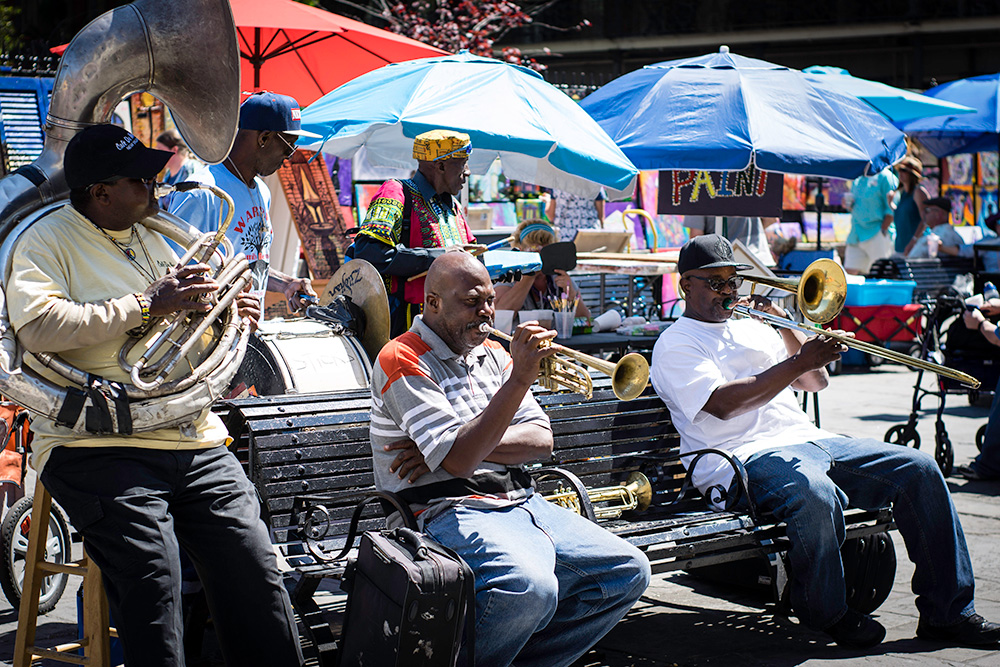
“People that ‘get’ New Orleans understand that it is like no other place in America,” says realtor and property manager Carolyn Freeman of Dorian Bennett Sotheby’s International Realty. It’s a city formed by the superstitions, traditions and history of Creoles, Spaniards, French, Irish, Italians, enslaved Africans and free people of color. The authentic experiences to be had in this city are driven by independent thinkers, creative spirits and non-conformists and can’t be had anyplace else. That may be why so many people fall in love with living in New Orleans. It all adds up to a rich quality of life, culture and a community that feeds the soul – if the Big Easy speaks to you.
Why do people choose to live in New Orleans?
“One of the things that always surprises me is how many folks have only been to New Orleans once or twice and still take that leap of faith to relocate here,” says Freeman. “It’s something I hear all the time – ask people why they’re moving to New Orleans and they say, ‘I just fell in love and couldn’t stay away.'”
That’s what happened to Nicole Draeger, a medical software professional who relocated from Minneapolis two and a half years ago. “It was the culture that really did it,” she says. “There’s a sense of neighborhood, of community and people taking care of each other, that I never experienced in other cities.”
Draeger, who recently purchased a new single home in the St. Roch neighborhood, is quick to admit that New Orleans isn’t perfect. “I was really surprised by the lack of infrastructure and the antiquated state of utilities, especially the Sewerage and Water Board. It took time to research recycling options, which in most cities are just obvious. But then again, no other city has what we do.”
3. There are plenty of neighborhoods to choose from.
Freeman is always trying to steer her clients to neighborhoods beyond the French Quarter.
“People naturally start with what they know, but there are so many other options when it comes to neighborhoods,” she says. Looking for some of the best places to live in New Orleans? Check out these neighborhoods:
Freret Corridor
This stretch of uptown barely existed 10 years ago. Now the residential swath anchored along Freret Street boasts cafes, bars, boutiques and music venues. “Think Magazine Street, but more affordable,” says Freeman. Pronounced fur-RET, this ‘hood is part of the Uptown and Carrollton area of the city.
Bywater
Twenty years ago, this section of the Upper Ninth Ward seemed like the hinterlands. Now, this ramshackle neighborhood that follows the river to the Industrial Canal is beyond discovered. Architecturally intriguing, Bywater is a residential haven of small, locally owned restaurants and businesses that thrum with New Orleans vitality.
Central Business District (CBD) & Warehouse District
In the last five years, high rise housing stock has sprung up in this business and cultural sector across from the French Quarter, offering apartments and condos with a suite of amenities, from a gym and pool to a parking garage. “Most people aren’t moving here to live in a high rise, but at least now we have that option,” says Freeman. The Paramount and the Standard are two cases in point.
The Warehouse District was once storage for the bounty that made New Orleans the richest city in America in 1840. Once abandoned and blighted, now the area is home to a concentration of arts organizations and museums, loft residences, restaurants and an increasing number of film production companies and sound stages.
Faubourg Marigny
The Marigny is just a few blocks from the honky-tonk of Bourbon Street, an original Creole neighborhood named for 19th-century aristocrat Bernard de Marigny de Mandeville. Marigny lost the family plantation to gambling (he’s credited with creating the game of craps), but his loss was the city’s gain. The Marigny, with its Creole cottages, music venues along Frenchmen Street, indie shops and eclectic restaurants, is popular and pricey.
Garden District
Taking the streetcar up St. Charles and rambling through the Garden District and along Magazine Street is one of the great pleasures of New Orleans. Leafy and green, this residential swathe, like much of the city, was originally the site of a plantation. But while the Quarter and the Marigny retained its French and Creole roots, the Garden District was part of the American sector.
Back in the day, the cultural divide was vast. Expect to spend big bucks for the turreted Victorians, Italianate and Greek Revival manses along streets like Washington, St. Charles and Prytania.
Gentilly
Although it’s central to just about everything, Gentilly offers quiet, suburban-ish scene minutes from downtown, along with lots of single-family houses with yards and driveways. It also offers convenient access to I-10 and 610.
Tiffany and Kevin Eyer, owners of Country Pie Properties, own and manage a dozen properties here. It’s a neighborhood that Tiffany has lived in for 25 years and where Kevin was born and raised. “Gentilly is one of the best-kept secrets of the city,” says Tiffany Eyer. “There’s an architectural appeal and an eclectic and diverse group of neighbors. All this adds up to a high quality of life and a warm sense of community,” she adds. Popular with families, this isn’t the scene if walking to bars and restaurants is a priority.
4. Homes in New Orleans are unique, charming – and old.
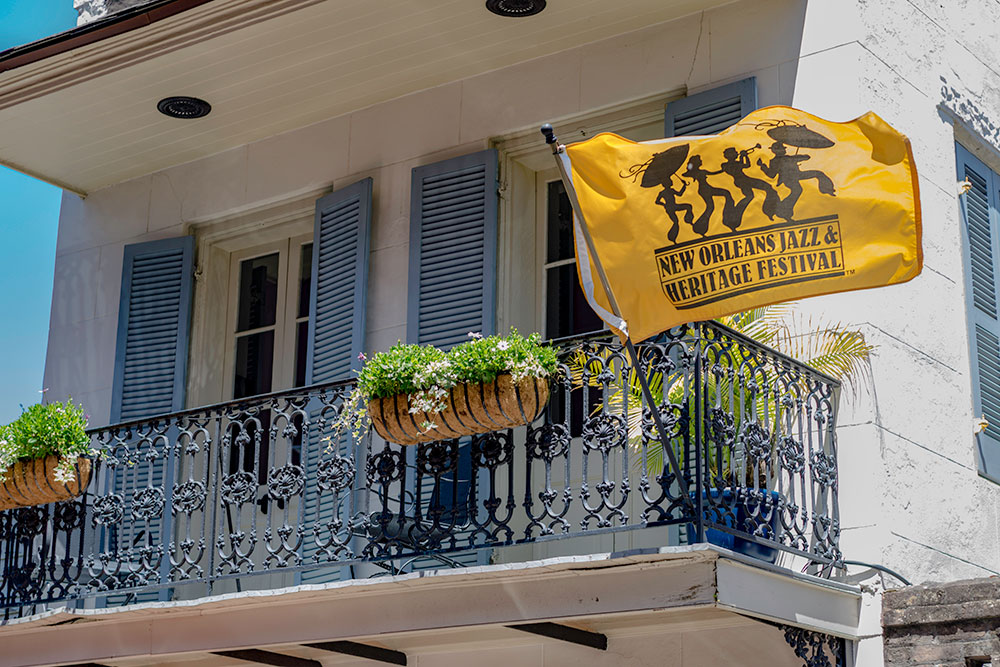
“New Orleans is an old city – last year we celebrated our 300th anniversary,” says Freeman. “People love the charm and character of living in an older New Orleans home, but the quirks that come along with that surprise them,” she says. “Dealing with the upkeep of 200-year-old homes can be a shock! Especially if you’re coming from a 1950s suburban development.”
What kind of old houses are common in New Orleans?
In her book, “New Orleans Streets: A Walker’s Guide to Neighborhood Architecture,” author R. Stephani Bruno identifies the most popular historic homes in the city.
Creole cottages
One of the oldest styles of historic homes, Creole cottages abound in Treme, the French Quarter and the Marigny. Distinguished by a roofline that slopes to the front and back, Creole Cottage usually sit at the very front of the property line.
Shotguns and double shotguns
Common throughout the city, these one-room wide long homes get their name because a bullet fired through the front door would go right out the backdoor without hitting a wall. Shotguns are typically two bedrooms, one bath with the kitchen and bath in the back. A double shotgun is a two-family duplex with a shared wall. It’s increasingly popular for double shotguns to be renovated into a single home with an open 3-bedroom, 2-bath floor plan. A shotgun with a second floor on the back is called a camelback.
Townhouses
Found in the CBD, French Quarter, Marigny and Bywater, these two-story homes are usually built at the front of the property line with a balcony on the second floor.
Double-gallery homes
Common in the Lower Garden and Garden District and along Esplanade Ridge, these two-story homes sit back on a deeper lot so you’ll often see covered galleries (or porches) on the first and second floors and a front garden.
Center-hall houses
Identified by a center door flanked by two windows on each side, these homes have a center hallway, similar to Creole Cottages but with a gabled roof. Find them Uptown, in the Garden District, Treme, Marigny, Carrolton and the French Quarter.
Bungalows
Although not the traditional New Orleans historic home, these newer, 20th century Craftsman style homes are common in Gentilly and Broadmoor. They often have off-street parking as an option.
5. There are plenty of things to do in New Orleans.
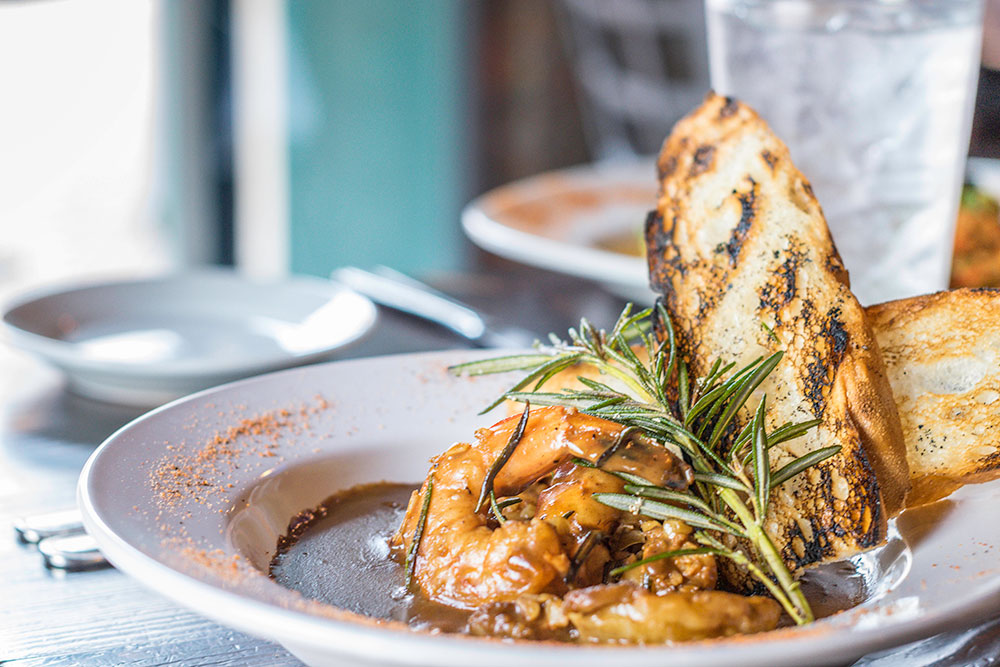
Food and Cocktails
New Orleans is a world-famous food town. In the 14 years since the flood reconfigured the city’s landscape, that is truer now than ever. Before the storm, there were roughly 800 restaurants, according to Kristian Sonnier, VP at Visit New Orleans. “Since Katrina, we’ve added close to 1,400 restaurants,” he said.
Case in point, Top Chef contender and James Beard award winner Nina Compton moved from Miami to New Orleans four years ago. She’s since opened two restaurants, Compare Lapin and Bywater American Bistro, which is nominated for Best New Restaurant in this year’s Beard Awards.
New Orleanians love their cocktails, and no wonder — legend has it the cocktail was invented right here! Locals also love the laxity of open container laws, meaning we can order a drink to go, in a plastic go-cup and wander the city sipping as we stroll. New Orleans is so synonymous with the craft cocktail movement that the annual Tales of the Cocktail industry convention brings more than 20,000 bartenders, bar owners, distillers, product reps to town every July.
Live Music
Jazz was also invented in New Orleans. Dancing in the street is common—and encouraged—here in Nola! Jazz Fest turns 50 this year and brings more than 450,000 people to the Fair Grounds in Mid-City. And that’s just for starters.
In this vibrant city known around the world as a music Mecca, a deep pool of talent not only energizes the club scene but enervates sidewalks from Royal to Frenchmen. There is music from afternoon into the wee hours, every single day and night, all over town.
Whether it’s Frenchmen Street, where a dozen venues beckon to Tipitina’s uptown and buskers along Royal Street, the New Orleans music scene is alive and thriving. Any old time, along the river and around Jackson Square in the French Quarter you’ll hear musicians making a joyful noise. Want to get a bead on the music scene before you get here? Listen to WWOZ, the local station that truly is the Guardians of the Groove.
Two Words: Mardi Gras
Mardi Gras season that begins the Twelfth Night, January 6, and culminates on Fat Tuesday, the day before Ash Wednesday. The locals know that Mardi Gras is a marathon, not a sprint. Besides all the balls, parties and king cake to eat, there are more than 80 parades in and around New Orleans, and it’s impossible to catch them all. Regardless, you’ll find that Mardi Gras is one of the best things to do in New Orleans.
The big parades are known for intricate floats, high-tech wizardry, awesome throws and grand costumes and themes. Then there’s the sheer underdog charm of the smaller walking parades, like the wonderful ‘tit Rəx parade of shoebox-sized mini floats, the Intergalactic Krewe of Chewbacchus a sci-fi themed parade, Barkus, with its canine stars. On Mardi Gras Day, the brilliantly costumed march of Societé de Saint Anne draws throngs of costumed revelers, an array of nutty creatives that collect marchers from Bywater into the French Quarter. The parade even stops at bars for celebrating along the way.
You Don’t Need a Car
Louisiana ranks as the second most expensive state for car insurance, which makes the city’s decent and cheap public transportation a plus. It’s still just $1.25 to ride the New Orleans Regional Transit Authority’s buses and streetcars that crisscross the greater New Orleans region. If you must drive, be aware that New Orleans traffic is similar to any other city—avoid rush hour, and you should be good to go.
Then there’s the city’s flat terrain, which makes biking a breeze. New Orleans has gone from 11 miles of bike lanes a decade ago to more than 100 miles, with the city boasting the 10th highest percentage of people who cycle to work each day, according to the American Community Survey. Bike share or car share is available for easy transportation in and around New Orleans.
6. The summer heat might take some getting used to.
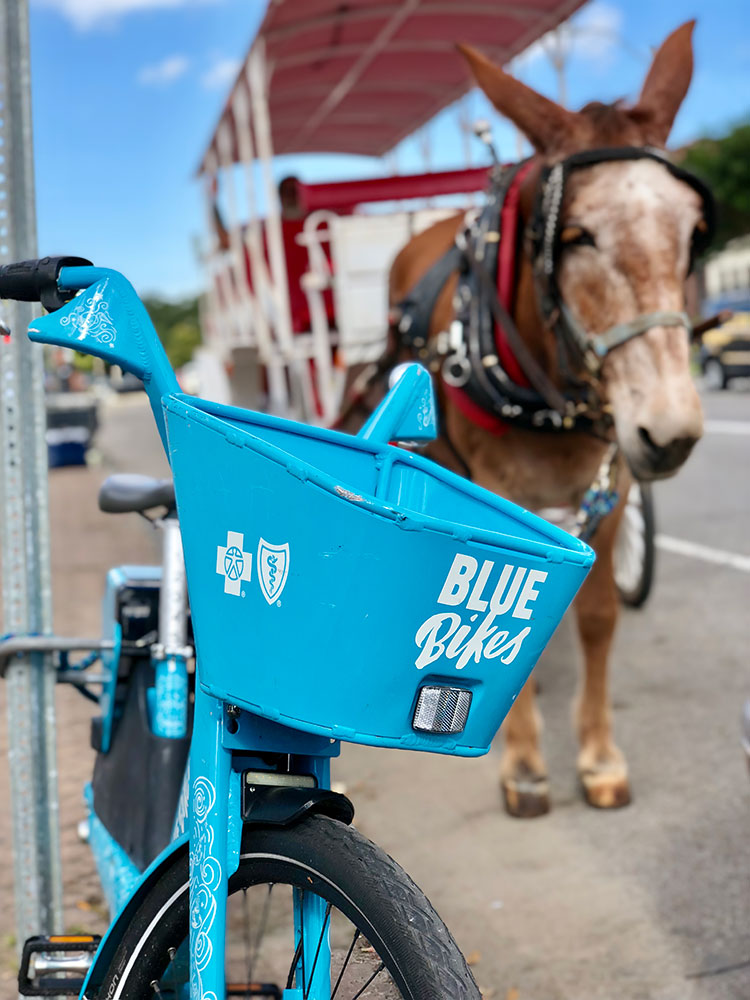
Those moving to New Orleans will need some time to get used to the sweltering summers. But fans of tropical climes and mild winters will adore the weather in New Orleans.
Typically, summers average in the 90s with close to the same percentage of humidity. Winter can be anywhere from the high 40s into the high 70s. Although hurricane season poses a threat from June through November, bear in mind that severe storms are rare. Margaret Orr, the chief meteorologist for the local NBC affiliate station WDSU, is a trusted go-to source for Nola weather forecasts.
7. The economy and job market are expanding.
Hospitality is the driver of the city’s economy, the top revenue generator that brings in an average of $8.7 billion per year. Service industry jobs abound and the opening of the world-class New Orleans Culinary & Hospitality Institute in January 2019 has upped the city’s training game in all things hospitality related. “The leisure and hospitality industry remains strong in New Orleans, providing more than 87,000 jobs,” according to U.S. News & World Report.
New Orleans Economy
The New Orleans Advocate predicts that the economy in New Orleans will expand in 2019-2010. The city’s economy is diverse, with oil and gas, international trade, maritime and healthcare rounding out the picture. Students and faculty fuel the city’s eight private and public universities, which include Tulane, Loyala and Xaviar.
The healthcare sector includes the $1.1 billion University Medical Center, which opened in 2015 and the long-planned Veterans Affairs Hospital which opened in 2016. Three-fifths of the 50 largest private employers in Louisiana are in the medical industry, according to data provided by Greater New Orleans Inc., citing DatabaseUSA.com.
Largest Employers in New Orleans
Some of the biggest companies in the city include Ochsner Health System, Tulane University, Woodward Design + Build, Entergy Corporation, Whitney Holding Corp., Boh Bros Construction and Superior Energy Services.
Cost of Living in New Orleans
The average home price in New Orleans is $187,100. This puts the cost of living slightly above the national average, making Nola a somewhat affordable place to live.
7. New Orleans is a green and leafy city.
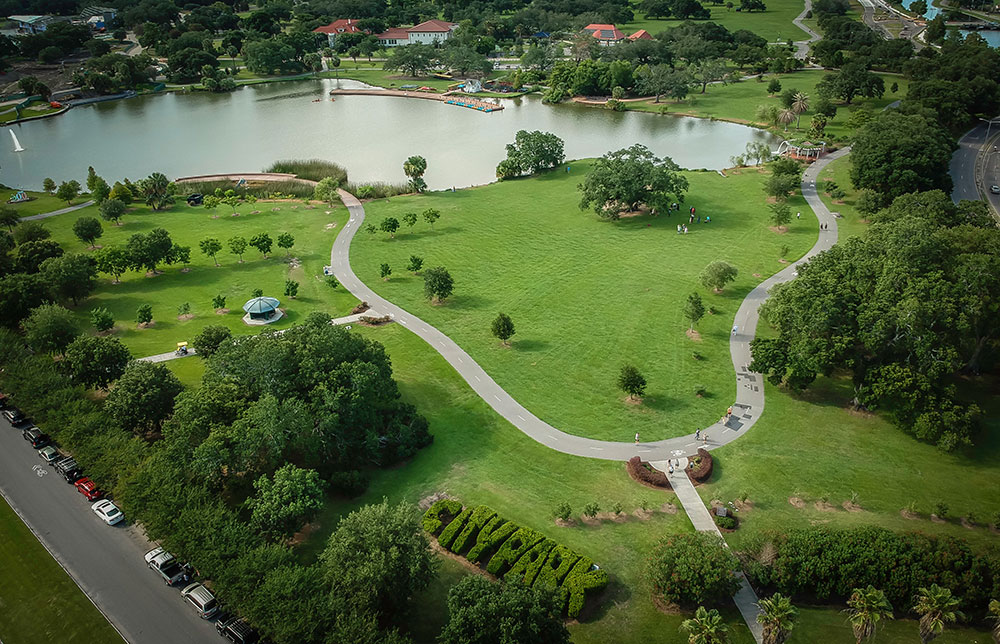
Contrary to popular belief, New Orleanians don’t spend all their time in bars. Sure, we live to indulge and celebrate into the wee hours. But we also need to air ourselves out on a regular basis. Thankfully, New Orleans is a green and leafy city.
New Orleans Points of Interest
- City Park is a 1,300 acre Eden known for its striking stands of live oak trees and endless arrays of outdoor recreation. The park includes the New Orleans Museum of Art, with its free outdoor sculpture garden, as well as a play area for kids and an antique carousel.
- Before or after a visit to the recently expanded Audubon Zoo, have a picnic in Audubon Park, a former plantation sandwiched between the river and St. Charles Avenue. Shaded by giant live oaks and ancient magnolias, the 400-acre park offers miles of jogging, hiking, and biking trails. Ask a local to direct you to The Fly, a section of the park that follows the levee and is a beehive of activity from barbecues to Frisbee throws and soccer games. It’s a great spot for watching the Mississippi river traffic, an endless flow of commercial barges and ships from exotic ports of call.
- The newest kid on the green block is Crescent Park, a 1.4-mile span from Elysian Fields Avenue in the Marigny to Mazant Street in Bywater, notable for its rusted Piety Street pedestrian bridge arching over the active railroad tracks below. Pathways planted with indigenous foliage meander along the river, offering spectacular city skyline view.
8. Sports fans will have several teams to rally around.
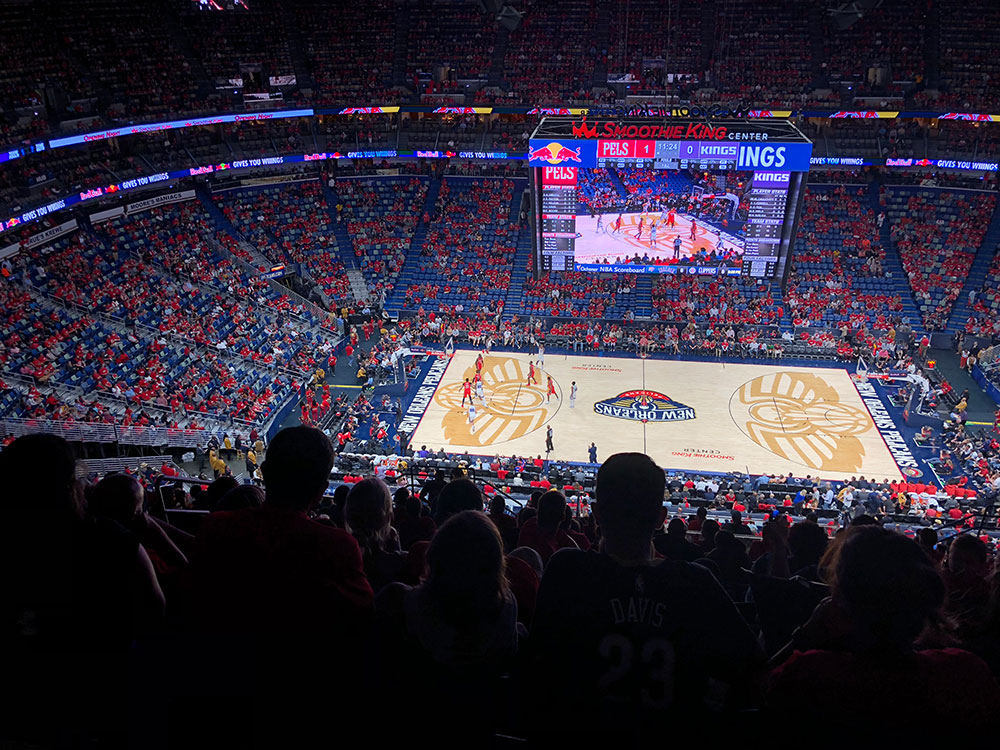
New Orleanians adore their Saints – we are proud to be a Who Dat Nation! But we love all of our sports teams:
- Visit the Mercedes-Benz Superdome to see the New Orleans Saints.
- See the New Orleans Pelicans play basketball at the Smoothie King Center.
- Watch the New Orleans Baby Cakes play minor league baseball at The Shrine on Airline.
9. There are several unique colloquialisms to note.
There are certain things about New Orleans that only the locals will understand. Here’s all the insider info you need before moving here.
New Orleans has parishes, not counties.
Founded on a Catholic church-based system dating to Louisiana’s French and Spanish founders, Louisiana, (and of course New Orleans), divided its maps into church parishes, and so it remains to this day. New Orleans is in the Orleans parish.
New Orleanians don’t say “north” and “south” when giving directions.
Ask a native New Orleanian which way is up and he may just scratch his head. The local’s skewed sense of place is because the river’s crescent curve turns everything upside down, which creates a maze of loopy streets in a city surrounded by so much water it may as well be an island.
Locals don’t give directions using ho-hum terms like east, west, north and south. Instead, it’s uptown, downtown, lakebound, (as in Lake Ponchartrain on the city’s northern border) and riverbound (as in the Mississippi). So, ask somebody to pinpoint a building’s location, and you might hear “it’s on the downtown, lakeside corner.” If that isn’t confusing enough, if you’re on the east bank of the river downtown and you need to head to the west bank, you go east.
In fact, if you’re going to understand New Orleans geography, your best bet is to give up your compass altogether. That’s just how directions are done in the Big Easy.
The locals have a funny way of saying certain words.
Newbies who want to blend in should keep an ear out for these weird pronunciations:
- Burgundy Street – say bur GUN dee.
- Carondolet – say ka ron de LET (yes, pronounce that T.)
- Calliope – the street is commonly pronounced KAL-ee-ope – unlike the organ on the Natchez, which is said the way you’d think.
- Beignet – Say Ben- Yay, then eat it!
- Tchoupitoulas – it looks like a tongue-twister, but refer to this street along the river as CHOP-ah-too-lus.
- Tujague’s – The 160-year-old Decatur Street restaurant is pronounced TOO + jacks.
- Lagniappe (Lan-yap) – A word that means a little something extra.
10. Quick Tips Before Moving to New Orleans
If you’re serious about relocating to New Orleans, you’ll want to be prepared for your move. Read on for some of our favorite moving tips.
Moving Reminders:
- Before you get started, set a moving budget. This will help you determine whether you’ll want to hire movers, donate excess items and more.
- Headed to New Orleans from another state or from a long distance? You may want to decide now if you want to ship your furniture or buy new.
- If you have a car, don’t forget to reregister it in Louisiana. While you’re at it, you may want to shop around for a better insurance policy.
- You may want to put excess furniture or belongings into storage until you get settled. We can help! Find cheap storage units in New Orleans with great features like climate-control and drive up access!
We hope this guide helps you make an informed decision on whether or not moving to New Orleans is the right city for you!
Update: This post was originally published in 2017, and was revised on March 21, 2019, with new information from New Orleans expert, Beth D’Addono.






